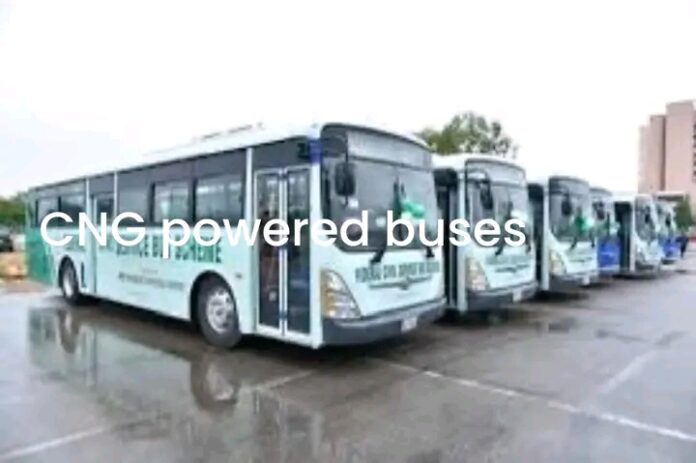
By Tahir Ibrahim Tahir Talban Bauchi.
The explosion of a car at a NIPCO CNG (compressed natural gas) station at Aduwawa in Benin city on Wednesday, October 16, 2024; has sparked more fears in the minds of those opposed to, or scared of converting their vehicles to CNG powered ones, to save energy costs from operating petrol (PMS) powered ones. However, preliminary investigations have found that the gas cylinder in the said vehicle was a welded and modified one, and not suitable or approved to be used for CNG. Since the campaign for the conversion of vehicles from petrol to CNG powered ones where such vehicles can also operate on both CNG and petrol, there has been a loud and misleading campaign against the safety of operating such vehicles. This should be expected, as we all know that the petrol industry is the largest, with the richest people in society as actors. The removal of subsidy and now the near elimination of fuel importation, are taking away trillions of naira being made around the PMS business. The introduction of CNG powered vehicles would be grounding or bankrupting the pool of businessmen that have been making a kill in the PMS industry. Importers with ships, traders with tank farms, transporters with thousands of trailers for haulage, marketers with tons of filling stations, and ofcourse smugglers; would be losing out heavily, were the use of CNG powered vehicles to take off in full flight.
CNG actually has so many advantages over PMS or petrol and the number one of these advantages is its safety. It is non toxic, and non corrosive. It is actually lighter than air which reduces the risk of explosion. Compared to petrol, it has a higher ignition temperature. Petrol explodes at a temperature of 440°C while CNG explodes at a temperature of 660°C! Clearly petrol is much more likely to explode than CNG. Specialised cylinders are manufactured with safety valves and burst discs to serve as tanks for CNG. They are fitted with leak detection and automatic shut off valves. CNG tanks are also stronger than petrol tanks and are made to be more resistant to punctures. Statistical evidence shows that CNG powered vehicles have lower incident rates, and are 30 to 40% safer than petrol powered vehicles. It is important to note that CNG is different from LPG, Liquefied Petroleum Gas, known as cooking gas. CNG cylinders are 12.7 mm thick while LPG cylinders are 4mm thick. Cooking gas explodes at 100°C while CNG explodes at 550 to 600°C. The highest temperature from a kitchen oven is 250°C. This should give you an idea of how safe a CNG cylinder is. Even the temperature in your cooking oven would not make it go burst.
The human factor or in this case the Nigerian factor however, is where our fears should be, regarding the whole CNG conversion discussion. Conversion centres are designated and certified by government. There is no short cut in this matter. If you get your vehicle converted at ‘mudashiru’s car joint’, it is quite likely that your car will go kaboom! There are safety measures, standards and quality guard rails that are taken care of appropriately in these certified centres. You risk losing all that, including your life and your vehicle, if you take chances. People may cut corners thinking they are getting their conversions for cheap. There is no cheap way to do it successfully. It is not like a tokunbo tyre or a China spare part that can last you a while. And to check the economics of it, certified centres in collaboration with government, are offering a ‘convert now pay later’ option. Commercial vehicles are being offered free conversions too.
The missing link in the chain is availability. Government needs to ramp up on the availability of these conversion centres, as well as CNG filling stations. The greater the visibility of these centres and stations, the better the campaign and success of this alternate source of energy for vehicles that is a whole lot cheaper. 1 kg of CNG is equal to 1 and a half litres of petrol. 1 kg of CNG costs 230 naira which is equivalent to 1500 naira of petrol. If you fill your tank with 60,000 naira, you would be spending 10,000 naira or less for the same weight of CNG. You can also use CNG to power your generator. Ofcourse it has to be built to utilise CNG as fuel, or converted using specialised knowledge and equipment.
The CNG campaign ought to have started a long time ago. If not pari passu with the removal of subsidy in the budget, it should have started way before the removal of subsidy took place. Had it started earlier, two years now into the official removal of subsidy from our budget (2022), the proliferation of CNG conversion centres, cars and filling stations would have been satisfactory. We would also have long overridden the backlash and the negative energy coming against the CNG initiative. But there’s no gain in crying over spilt milk. Government has got to ramp up this campaign a hundred fold, so that the utilisation of CNG gets to every nook and cranny of the country. It would make energy cheaper for a lot of people. This can make transportation easier. It can also make food cheaper. Dangote and NIPCO have been using CNG powered trucks for over 10 years in Nigeria. It works for them and it can work for us too. PMS marketers should embrace the CNG market too, just as we the consumers embraced subsidy, it’s removal, and it’s conversion into CNG. They can be hybrid marketers too if they so wish, operating both petrol and CNG.








































